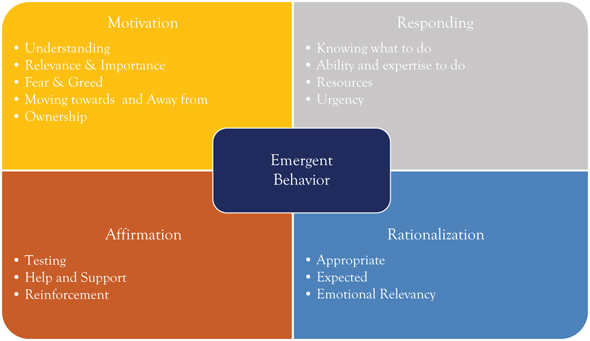Successful change comes from managing ambiguity and working with gray
Summary
Uncertainty, risk, nuance, and shades of gray are part of the ambiguity of our lived experience and are present within change. Whether we recognize and elect to manage ambiguity and respond or not, the impacts are there. Success in managing change and business transformation comes through the proactive management of ambiguity and when the ambiguity management skill is used across the implementation. Having ambiguity management developed for use in ongoing operations and services is also of benefit. This chapter aims to provide an overall approach to the adoption and adaption of ambiguity management within transformation and organizational change management because of the value it brings to those leading and undergoing change.
Key Learnings
Key learnings from this chapter include:
• Managing ambiguity is part of bringing and leading change and transformation and enables adoption and adaption.
• Ambiguity management is an emergent behavior required at all levels and includes managing gray, working the unplanned, having a nuanced approach, and management of risk and Project Risk (Impact Risk, Outcomes Risk, Delivery Risk, External Risk).
• Working with what you have and bringing out the best in them, learning the lessons, and building capacities and capabilities lead to the crafting and shaping of the emergent behavior.
• The emergent behavior is often developed over time based on skills and expertise with leadership being the change they wish to see and treating others as they would be treated.
• Managing ambiguity is used in the crafting and shaping of the emergent behavior and the emergent behavior is used to manage ambiguity.
Introduction
Bringing change requires the management of ambiguity. Within an implementation, nuanced situations occur, people respond differently, and what works for one group in one location may not work for another group in a different area. Our lived experience is that we know that the one size fits all approach seldom works. Whether it is a revised response to implementation as circumstances change or we find our skills and expertise vary with additional support needed, we live in a world of gray and nuance. It is the ability to manage ambiguity that is integral to managing both change and ongoing business operations. Look no further than the ambiguity or the unknown in decision making with corresponding impacts.
The management of nuances, ambiguity, and gray is seen within digital transformation, where the need to respond to technology exists, balanced by the uncertainty of outcomes with the need to pragmatically keep the business operating, including managing the risk associated with the transformation. After all, things will go wrong, and the unplanned will need to be managed.
Ambiguity Management (the A in AMEDLI) is first because we need this ability from the moment we decide to start planning or making change, through to the last minute of implementation, and ongoing operations and services. Look no further than the community group or sports team where running the operation has a range of situations for which ambiguity needs to be managed, for example, rescheduling of venues or changes in attendance. Also, in its simplest terms, change is about getting people to do things different and any transition will proceed differently from person to person. Therefore, ambiguity management is needed, and if the capacity and capability to manage ambiguity exists, a better outcome is likely.
Working with ambiguity (Figure 2.1) requires diversity of skills with respect and confidence within each other. Handling of the unknown is managed through decision-making capacities and capabilities and the ability to respond as required. Ambiguity and unknown requires the working with incomplete information and there needs to be a process for assessment to know what is working and what needs to be addressed.
When implementing a new technology solution or replacing a legacy system, the following are required:
• Managing Gray—From estimating the business case to managing vendors to scope creep in requirements or changing deadlines, managing gray is part of the work.
• Managing the Unplanned—Changes in the business environment during the time of implementation bring changes to what is required. These are unplanned and need to be managed.
• Nuance—Many of the decisions and trade-offs are nuanced. It is not known how things will unfold.

Figure 2.1 Ambiguity, the unknown, and the incomplete is the norm and not the exception
• Risk Management—The risk to the business of making the change needs to be managed. Risk management skills and frameworks are part of bringing the change.
• Project Risk—Most new technology solutions or legacy system replacements are managed as projects, requiring the management of Project Risk.
Such nuance is needed in many other areas of managing change. This chapter seeks to help build these capacities and capabilities within leaders, groups, and participants in change and transformation so that they can adopt and adapt better to the circumstances impacting. The topics covered include the managing of gray, managing the unplanned, use of nuance in delivering change, and managing risk and the risk in projects (after all, bringing change is a project). Some next steps are also included.
Managing Gray
To Get the Most
Within our lives we may seek to look at things in terms of black and white. Yet, when it comes to people and what they do and how they do it, many things are not a simple binary option or black and white. The many competing factors and interdependencies come to the fore and life is about managing multiple shades of gray. This is also the case with change management, the decisions made, the implementation, and the responses needed. Have the capacity and capability to work with gray, manage the outcomes, and be able to support others within a world of gray is part of successful change and transformation as well as ongoing support and operations.
Setting the Example
The capacity and capability to work with and manage gray comes from the emergent behavior of empowered individuals with ownership and pride in who they are and what they do. Building, managing, and sustaining (crafting and shaping) an emergent behavior for managing gray requires various skills and expertise from leadership and those around us as well as within us (Figure 2.2).
The emergent behavior for managing gray requires all of the elements (Figure 2.2) to create, sustain, and manage. What varies is the comparative amount at different stages which differs with people and circumstance as well as their skills and expertise. Forming the emergent behavior for managing gray requires the management of ambiguity and uses the skills of working with gray. This requires:
• Confidence—For the leaders crafting and shaping the emergent behavior through the actions of empowered individuals, confidence is needed. Leaders need to have confidence in those undergoing the change just as much as those experiencing the change need confidence in leadership. Confidence between colleagues is also required. Confidence comes where there is credibility (mutual respect) as well as an understanding of what is happening and why. Confidence requires the management of complexity across multiple stakeholders. By showing a caring for the needs of others, confidence is instilled (a confident team is part of success).
• Clarity—We seek clarity as this helps with uncertainty and ambiguity which serve to bring confidence. Where we see an alignment of efforts and a fair contribution, it helps with clarity. Clear communication of why, the importance, what to do, and where to get help and support also serve to clarify the actions. With affirmation of our efforts and the ability to rationalize, a sense of clarity is seen. Across the leadership, colleagues, and within individuals, success comes from a clarity of purpose (e.g., the sports team winning a championship).

Figure 2.2 Emergent behavior to manage gray
• Skilling—People are of different personalities, skills and expertise, and experience. Across the team or group, a mixture of complementary abilities is required. Part of successful change is building the required capacities and capabilities. Skills required include Adaptiveness, Responsiveness, Resilience, and the forging of Ownership and Empowerment (e.g., team building for a sports team). It is the skilling that lifts the capacities and capabilities for adaptiveness and responsiveness in the emergent behavior for managing gray.
• Decision Making—Having clear decision-making responsibilities and the ability to make decisions across the group or team are required. Good decision making comes from having a diversity of skills and respecting and inclusion of different views. Decisions are only as good as the implementation which depends upon responses required as circumstances change.
Collectively an emergent behavior is formed to support the management of gray.
Making It Real
Building the required emergent behavior can take time, and once developed, it needs to be sustained and strengthened. At the leadership level, the focus is on the overall capacities and capabilities across the emergent behavior. Bringing out the best in individuals through the sense of ownership and empowerment is how the emergent behavior is built and sustained. The role of leadership is to craft and shape to enable the individuals. Making it real may include:
• Defining what is required to form the emergent for managing gray.
• Distinguishing the behaviors required and how to instill through skilling.
• Identifying the complimentary skills and expertise across the group or team.
• Recognition of strengths and needs for development.
• Start small and develop over time. Be the change you wish to see and treat others as you would wish to be treated. Take advantage of opportunities to build support and structures to adopt and adapt.
Further Details
• Emergent Behavior—Change comes through the emergent behaviors that crafted and shaped (see Chapter 4 Section “Having Empowered Emotional Ownership”).
• Actions of Individuals–Leadership is needed to craft and shape emergent behaviors, but it is the actions of empowered individuals with ownership and the emotional bond that delivers the emergent behavior (see Chapter 7 Section “Relate to Me”).
• Video—Weekly Mirror Message—Managing People Shutdown (https://youtu.be/m_PsC1gObd8).
• Video—Problem Solving Together for Our Future: Sharing Skills and Expertise—Managing Grey (https://youtu.be/92mmJSxhbNs).
Managing the Unplanned
To Get the Most
We know that the unexpected occurs, that things can go wrong even with the best laid plans. Situations vary over time and revised responses are required and mistakes are made. The unplanned is the norm rather than the exception. Managing the unplanned is working with the unexpected and seeking to gain from it to make the most with what we have. Provisioning for managing and responding to the unplanned is part of Ambiguity Management and compliments the management of gray. Managing the unplanned is also an emergent behavior requiring many of the elements of managing gray, but also has its own elements (Figure 2.3).
Managing and working with the unplanned requires:
• Understanding—Difference in understanding occurs which brings out the unplanned. By changing the environment, to instill the behaviors required to influence the outcomes in response to needs, we create an understanding for working with the unplanned.
• Expertise—Variations in expertise of those involved with differing motivations, experience, and skill levels occur, which impact the unplanned. Through skilling, shared experience, and motivation with shared Interests and Values of empowered ownership, the expertise is built and strengthened to work with the unplanned.
• View—A variety of views occur based on shared interests and values as well as experiences based on past outcomes achieved or what has been seen. By aligning interests and values and using the past outcomes experience, the diversity of view can be included within the emergent behavior for managing the unplanned.
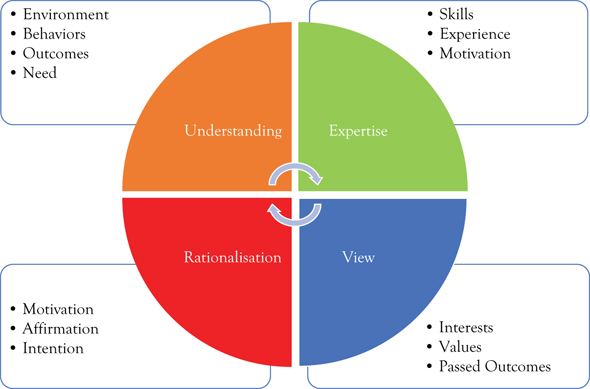
Figure 2.3 Understanding the unexpected response
• Rationalization—With the unplanned, we need to rationalize. Our rationalization helps us manage mistakes, prepare for avoiding future mistakes, and provides a framework for our understanding and actions. The rationalization includes our motivation, our intentions, and affirmation of our actions. Including rationalization within managing the unplanned is a tool for managing and working with the unplanned as well as a way to strengthen capacities and capabilities for future adoption and adaption.
Collectively the working with the unplanned is accommodated within ambiguity management and forms the basis for making the most of the unplanned to better our people and what we do.
Setting the Example
Working with the unplanned requires the incorporation of the advantageous and beneficial. Where the unplanned is disadvantageous, there is a reason, with opportunities for lessons learned and reshaping the emergent behavior. Working with and managing the unplanned (Figure 2.4) requires making use of AMEDLI through:
• Enablers—By changing the environment, to instill the behaviors required to influence the outcomes, the emergent behavior is crafted and shaped.
• Aligning the Achievers—The enablers are used collectively to align the achievement through alignment of effort, providing rails for operation, and building momentum.
• Use of the Assurers—These assure the overall outcomes in forming the emergent behavior and from the emergent behavior to work with the unplanned.
It is the combination of strategy and leadership, strengthened with skilling, to influence the environment, to instill the behaviors, which gives the capacity and capability to form the emergent behavior through adaptiveness, responsiveness, and resilience. It is our response as individuals with empowerment and ownership with the required affirmation and rationalization that forms the emergent behavior and provides the help and support to others. We know how to form, manage, shape, and influence the emergent behavior. We work with the unexpected. We make the most of what we have. We bring forth the best from us. Through this we manage the unplanned responses.

Figure 2.4 Leveraging the unexpected response
Making It Real
Working with the unplanned is characterized by:
• Accepting that the unplanned is the norm and planning and working on this basis rather than assuming things will go well.
• Learning the lessons when the unplanned occurs.
• Heading the warnings from the unplanned rather than ignoring, especially repeat occurrences.
• Admitting errors and mistakes or changes in circumstances to adapt and adopt.
The emergent behavior for managing the unplanned is developed similar to that for managing gray (see Section “Managing Gray” of this chapter), but with a focus on the inclusion of experience.
• Emotional Rationalization—Part of managing the unplanned and gaining from it is the emotional rationalization (see Chapter 4 Section “Emotional Rationalization”)
• Forming the Emotional Bond—The messaging from leadership and people of influence is important in managing the unplanned (see Chapter 3 Section “Communicating to Form Bonds”).
• Video—Weekly Mirror Message—Starting the Change Journey Using Opportunities to Build Along the Way (https://youtu.be/4WjqIzbHpew).
• Video—Problem Solving Together for Our Future: Sharing Skills and Expertise—Managing the Unplanned (https://youtu.be/lBIp0PWVvFY).
Nuanced Approach
To Get the Most
Pragmatic experience shows us that business is nuanced. Situations are often complex. Interdependencies exist. Logistics need to be worked through and expectations managed. Despite our desire for simplicity, we know that there is no one size fits all, no panacea, no silver bullet, and no magic wand. The path we take has lots of detours, dead ends occur, we double back, and progress is not always incremental. We don’t always say the right thing. Our actions do not always work as planned. Others respond differently than expected and events change. While we simplify and prioritize so that the complexities can be managed, it is our management of nuance and our responses to nuance that delivers.
Setting the Example
Nuance is about working with what we have to manage the changing situations we experience. Managing nuance is also an emergent behavior with a strong experience-based aspect to it. Managing nuance requires a series of elements (Figure 2.5) that are consistently and persistently applied. Nuance is developed through the lessons learned in mistakes. Nuance includes:

Figure 2.5 Nuance is about managing the reality with what we have
• Management of Mistakes—Acceptance of mistakes, adopting and adapting to mistakes, learning from mistakes, but also trying to head off and minimize mistakes. It is important to support people when mistakes occur because this is how they recover and improve. The supporting and nurturing sports team is a better environment and often more successful than the negative one.
• Adapting to the Unexpected—The unplanned and the unexpected occurs. The issue is how we respond and the change in approach for adoption and adaption to the situation at hand.
• Accepting the Complexity—Managing the complexity is in itself nuanced. Yet it is often the simple that works in resolving the complexity. Breaking complexity down into component parts, addressing root causes (not just the symptoms), consistent application of what we know that works, and working with rather than fighting the complexity are required.
• Expecting the Unknown—Even with the best planning and the best people and processes, there is always the unknown. Like adapting to the unexpected, it is preparation for responding to the unknown and capacity and capability building for the unknown that is required. When the unknown occurs, it is about expectation management to work through the situations that occur.
• Different Approaches—Working with nuance requires the use of different approaches according to the varying circumstances. Local factors come into play for which a customized response is required. While the response may be based on the proven recipes (people, processes, tools, information) for implementation, the ability to adapt and adopt is also required.
• Combining Solutions—The one size fits all approach seldom works, and situations vary over time. A multitude of approaches used in different ways, at different times, and varying over time are necessary. Aspects need to be included and other areas wound back as the response matures.
Nuance is managing the reality we have with the resources we have and working to get the best from them. Crafting and shaping the emergent behavior for nuance is part of the skilling for change and is a valuable tool within realizing change and transformations.
Making It Real
Taking a nuanced approach and working with nuance is developed, managed, and sustained in a similar way to managing gray (see Section “Managing Gray” of this chapter) and managing the unplanned (see Section “Managing the Unplanned” of this chapter). Managing nuance is ongoing and is developed over time with experience. Leaders need to trust the team and provide support. Leaders work with what they have to build the behaviors to get what they seek to achieve. Managing nuance does require accountability and responsibility which come from the Empowered Emotional Ownership.
• Iterative Adoption and Adaption—Nuance requires decision making (see Chapter 5) and a sustained approach to keep people motivated (see Chapter 7 Section “Adoption and Adaption”).
• Nuance Is Managing Risk—Managing risk is part of achieving change (see Section “Risk Management” of this chapter).
• Leadership Influences the Emergent Behavior—Leaders work with what they have to build the behaviors to get what they seek to achieve (see Chapter 6).
• Video—Problem Solving Together for Our Future: Sharing Skills and Expertise—Nuanced Approach (https://youtu.be/nTJiHobefLs).
Risk Management
To Get the Most
Whether we choose to manage risk or not, the risk is still there, and Risk Management is part of our lived experience. Managing risk is often emotionally driven by personalities, experience, and skills. Look no further than the extreme sports person alongside the person with an extended family and heavy financial commitments or the trader on a trading floor alongside the audit and regulatory team. From the risk of the change implementation being unsuccessful or overrunning the cost, through to the risk of people resisting change, to risk of loss of promotion or job, risk is inherent in our lives. Whether consciously or not, we adopt a risk-based approach to business (Figure 2.6) and to our activities. The capacity and capability to manage risk is part of change management or transformation and is required at all levels and by all those involved in the activity.
Setting the Example
Risk Management has a particular use in realizing change or transformation through its use in expectation management. Risk is used to shape messaging by advising and reinforcing and is a tool for alignment of Interests and Values. Risk management comes from an emergent behavior of the actions of people where the right environment brings the behaviors to result in the outcome of an emergent behavior to manage risk including:
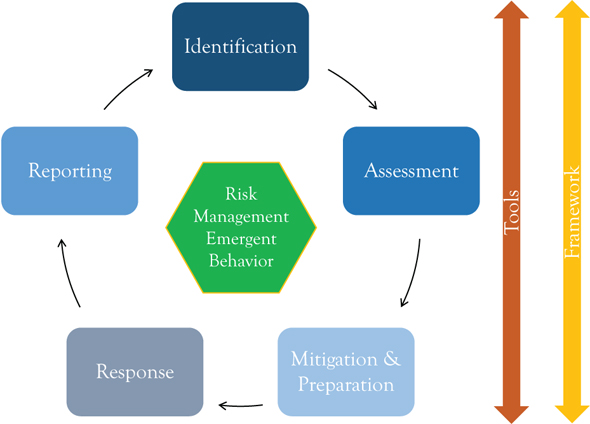
Figure 2.6 Risk management-based approach in business
• Understanding—Where we understand the risk and the impacts, for example, preparing a bushfire survival plan.
• Relevance and Importance—When the risk is seen to be relevant and important. Those living in areas hit by cyclones are motivated to have a plan, especially as the cyclone season approaches.
• Emotions—Through responding to our emotions. Fear can see us clean gutters and trim trees from around the house in the bushfire season. Greed can see us take chances like the responding e-mails that offer us money for no reason. Our risk management can see us Move Toward safety and Move Away from the hazard by preparing for a cyclone.
• Having Ownership—If we feel in control, we get ownership.
Crafting and shaping the capacity and capability for risk management requires a motivation (Figure 2.7) and includes:
Figure 2.7 Managing risk through the emergent behavior of people
• A Motivation:
![]() Understanding what is required.
Understanding what is required.
![]() It is relevant and important to those involved.
It is relevant and important to those involved.
![]() The sense of ownership exists.
The sense of ownership exists.
![]() The emotions of fear and greed are addressed.
The emotions of fear and greed are addressed.
![]() The move away from and the move toward emotions are resolved.
The move away from and the move toward emotions are resolved.
• Respond to risk through:
![]() Knowing what to do.
Knowing what to do.
![]() Having the ability and expertise to respond.
Having the ability and expertise to respond.
![]() Having the resources to respond, for example, time and people.
Having the resources to respond, for example, time and people.
![]() An urgency to respond.
An urgency to respond.
• Our ability to Rationalize is part of our management of risk because it strengthens the emotional bond of Motivation:
![]() We need to feel our actions are appropriate.
We need to feel our actions are appropriate.
![]() Where we feel that our efforts and responses are expected, we respond accordingly. Knowing that colleagues at work approve of our measures to help protect them is part of our rationalization and achieves better risk management outcomes.
Where we feel that our efforts and responses are expected, we respond accordingly. Knowing that colleagues at work approve of our measures to help protect them is part of our rationalization and achieves better risk management outcomes.
![]() We need to feel that what we are doing is relevant to us and those we care about. This Emotional Relevancy is part of the rationalization and helps with the emergent behavior.
We need to feel that what we are doing is relevant to us and those we care about. This Emotional Relevancy is part of the rationalization and helps with the emergent behavior.
• When we receive Affirmation for our efforts, better risk management is seen. Affirmation can come from:
![]() Testing. We can test our emergency evacuation plans, for example, at a set time we can grab the agreed emergency packs and the family and drive to a location and assess the results. Through testing we know that our responses are fit for purpose and we can affirm our actions.
Testing. We can test our emergency evacuation plans, for example, at a set time we can grab the agreed emergency packs and the family and drive to a location and assess the results. Through testing we know that our responses are fit for purpose and we can affirm our actions.
![]() Help and support. We can get help and guidelines to know what an emergency plan should contain. We can work with family and friends and neighbors and through these, we get affirmation of our efforts.
Help and support. We can get help and guidelines to know what an emergency plan should contain. We can work with family and friends and neighbors and through these, we get affirmation of our efforts.
![]() The views of experts and people we respect around us confirming our risk management provides Reinforcement.
The views of experts and people we respect around us confirming our risk management provides Reinforcement.
By providing the Motivation, by Responding, and with Rationalization and Affirmation, the emergent behavior of people managing their risk can be achieved. This emergent behavior applies to management of risk in business or to emergency responses or to the daily management of risk in our lives. This also gives us our ability to manage gray (see Section “Managing Gray” of this chapter) and the unplanned (see Section “Managing the Unplanned” of this chapter).
Making It Real
Achieving and sustaining the emergent behavior of risk management is a collective response from us as empowered individual with a sense of ownership, because we are motivated, can Rationalize, and are supported with the right Affirmation (Figure 2.8). Incumbency and Vested Interest impact our actions. By Providing us with Support and Guidance, showing Empathy, assisting with Skilling, and given a Purpose, we can then manage risk. Our risk management is impacted by our Peers. We are motivated by shared Interests and Values, and we Influence those around us, as they Influence us. Consistency and clarity of motivational messaging also helps us.
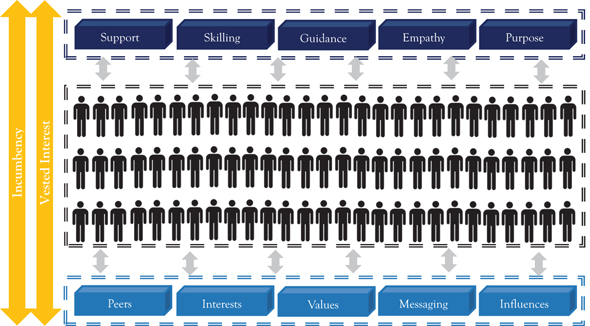
Figure 2.8 Behavioral response to a risk for emergent behavior
Further Details
• Reference—Sherringham, K. & Unhelkar, B., (2010). Achieving Business Benefits by Implementing Enterprise Risk Management. Cutter Consortium Enterprise Risk Management & Governance Executive Report 7(3).
• Video—Weekly Mirror Message—Risk Management within the Change Stacks (https://youtu.be/mIqLs3N7A7g).
• Video—Problem Solving Together for Our Future: Sharing Skills and Expertise—Managing Risk (https://youtu.be/J97ah30XrjE).
Project Risk
To Get the Most
Related to Ambiguity Management, and to the overall management of risk, is the management of risk from projects (programs or portfolios, see Figure 2.9) of work. Implementing change or transformation is a series of projects, programs, or portfolios (e.g., process changes or a new system or the implementation of awareness courses within sports teams) that are established, managed, and transitioned to ongoing activities. Each one has its own risks and risks to the overall business. This makes managing Project Risk a skill and an expertise to have when implementing change with capacities and capabilities across those involved (i.e., another emergent behavior).
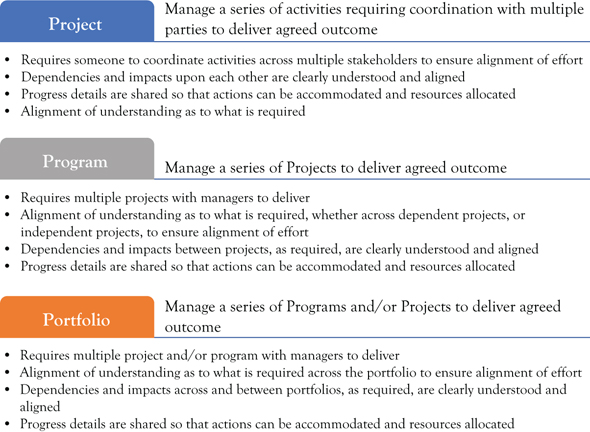
Figure 2.9 Summary of projects, programs, and portfolios
Setting the Example
A risk-based approach and the management of risk are integral to the delivery of change, but the risk management of projects is more than the routine tracking of a risk impacting the delivery of a project. Project Risk (Figure 2.10) includes:
• Impact Risk—This is the risk to the business from the project. Considerations include a lower risk profile to the business from a proactive project, whilst a reactive project may have greater impact, especially when the project is late or not integrated into the business properly.
Figure 2.10 Managing project risk
• Outcomes Risk—This is the risk of the project delivering the required outcomes. The more complex the project, the more stakeholders, the more dependencies, and the larger the size, the higher the risk (i.e., less chance of delivering).
• Delivery Risk—The risk in delivering the project. This is the most often tracked risk by project managers, as these are the risks impacting schedule or cost.
• External Risk—These are the external factors, often beyond the control of the business, impacting a project.
Irrespective of the size, type, or sector of a business, Project Risk management experience alongside project management skills and expertise is required for managing change and transformations as well as part of Ambiguity Management.
The importance of project risk is often within digital transformation, where the technology leads the business integration and the technology is deployed followed by remediations.
Making It Real
The management of Project Risk changes the focus of Program Management and Portfolio Management (Figure 2.11) as follows:
Figure 2.11 Business risk from project risk
• Projects—Project Risk management is more than the traditional delivery risk management. Project risk management becomes focused on assurance to the needs of the portfolio and the business outcomes.
• Programs—Although Project Risk is managed at the Project level, Project Risk still occurs at the Program level. The focus of the Program is on the management of the outcomes from the projects to meet those of the portfolio as well as the impact management from the Projects to the Program.
• Portfolios—At the Portfolio level, the risk from projects and programs still occurs, but with a change in focus. Portfolio management is about managing a series of business risks as a coherent portfolio and the business outcomes to meet the risks.
This change of focus is included within the capacity and capability building for the change or transformation as an emergent behavior similar to that of managing gray (see Section “Managing Gray” of this chapter), managing the unplanned (see Section “Managing the Unplanned” of this chapter), managing nuance (see Section “Nuanced Approach” of this chapter), as well as being part of overall risk management (see Section “Risk Management” of this chapter).
Consider a business responding to a large economic downturn; a portfolio of work may be needed with programs and projects to address:
• Facilities management changes including revised accommodation.
• Finance and treasury to address liquidity, cash-flow management, and revenue adoption and adaption.
• Revisions to safety and security.
• Meeting legal, regulatory, and compliance requirements.
• ICT infrastructure and operations and services.
• Managing the risk to people.
• Operational changes.
• Customer management including revenue preservation, retention, sales, and marketing in the new constrained markets.
Irrespective of the size, type, or sector of a business, Project Risk management experience alongside project management skills and expertise in true costed projects is required by a business undergoing transformation.
Further Details
• Project Risk is Part of Business Risk—Project Risk impacts a business and is part of business risk and the risk-based approach to business (see Section “Risk Management” of this chapter).
• Project Risk in Project Management—Change is a series of projects which need to manage Project Risk (see Chapter 8 Section “Project Management”).
• Video—Problem Solving Together for Our Future: Sharing Skills and Expertise—Project Risk (https://youtu.be/HeWR1__3grQ).
Next Steps
The next steps can be summarized as follows:
• Recognizing the significance of ambiguity management within the change or transformation and its role in ongoing operations and services.
• Working with the need for managing ambiguity, what is the role and need for managing gray, working the unplanned, having a nuanced approach, management of risk and Project Risk (Impact Risk, Outcomes Risk, Delivery Risk, External Risk) across the activities.
• Based on those involved, deciding the comparative skills and expertise for the management of ambiguity, then working to integrate the respective skilling to craft and shape the overall capacities and capabilities for ambiguity management.
• Start to form the emergent behavior in a staged and iterative approach, accepting that it is nuanced, and it will take time. Build the capacity and capability and strengthen with expertise.

